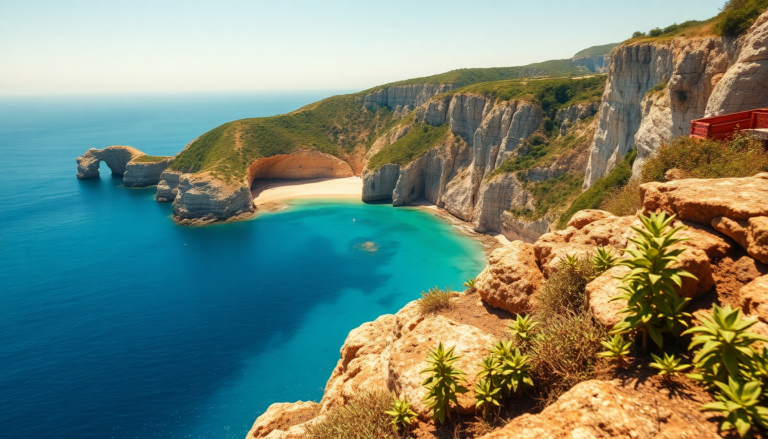Argomenti trattati
Nestled just off the coast of Peniche, the largest and only inhabited island of the Berlengas archipelago is a breathtaking natural paradise that welcomes a limited number of visitors. Berlenga Grande is renowned for its stunning landscapes, rich history, and vibrant wildlife, making it a must-visit for anyone traveling through Portugal.
A brief overview of Berlenga Grande
Though relatively unknown to many, Berlenga Grande is celebrated as one of the most beautiful nature reserves in Portugal. Recognized by UNESCO as a Biosphere Reserve, this enchanting island can accommodate only 350 visitors per day, ensuring that its pristine environment remains protected. This initiative is particularly important as the island serves as a nesting site for various seabird species, including some that are endemic to the Portuguese islands.
Of the three main islands in the archipelago—Berlenga Grande, Estelas, and Farilhões-Forcado—only Berlenga Grande is accessible to tourists. The island boasts a wealth of colors, history, and geological wonders, making it an essential stop for any traveler planning a trip to Portugal.
History and cultural significance
Berlenga Grande has long been inhabited, dating back to the Phoenician era when it was considered a sacred site. In the first millennium BC, rituals dedicated to Baal-Melqart, the protector deity of Tyre, were held here. Over the centuries, the island has seen the presence of Romans, pirates, and monks, the latter sent by Queen Eleonora of Viseu to assist navigation and aid shipwreck victims.
These monks constructed the Monastery of Misericórdia da Berlenga, where they lived for 35 years. Today, the remains of this monastery are found beneath the Forte de São João Baptista, which stands as a testament to the island’s rich historical tapestry.
Natural beauty and biodiversity
Berlenga Grande is remarkable not only for its historical significance but also for its stunning natural features. The island is surrounded by crystal-clear waters and is characterized by numerous caves that can be explored by boat. Among these are the Gruta Azul and Furado Grande, the latter measuring an impressive 70 meters in width. Geologists particularly appreciate the island for its rare pink granite, which is uncommon in Europe.
The local flora is equally fascinating, with the endemic species Armeria berlengensis flourishing among the rocky granite slopes. This flowering plant, part of the sea thrift group, blooms in April and May, showcasing delicate light pink flowers that add to the island’s allure.
Visiting Berlenga Grande
Reaching Berlenga Grande is straightforward, with a 40-minute ferry ride from the town of Peniche. Before embarking on your adventure, obtaining a Berlengas Pass is essential. This permit, established by the Portuguese government, regulates the number of visitors to the island. Due to these limitations, it is advisable to book in advance, especially during weekends or peak seasons.
Once on the island, visitors have various ways to explore its beauty. A scenic path crosses the island, offering splendid views of Estelas and Farilhões islands. Alternatively, a boat tour can take you to the enchanting caves, or you may prefer to relax on the picturesque Carreiro do Mosteiro beach.
Takeaways
- Berlenga Grande is a UNESCO Biosphere Reserve, accessible only to a limited number of visitors.
- The island is rich in history, having been inhabited since ancient times.
- Natural features include stunning caves and unique flora.
- Advance booking is recommended for visits, especially during busy periods.

